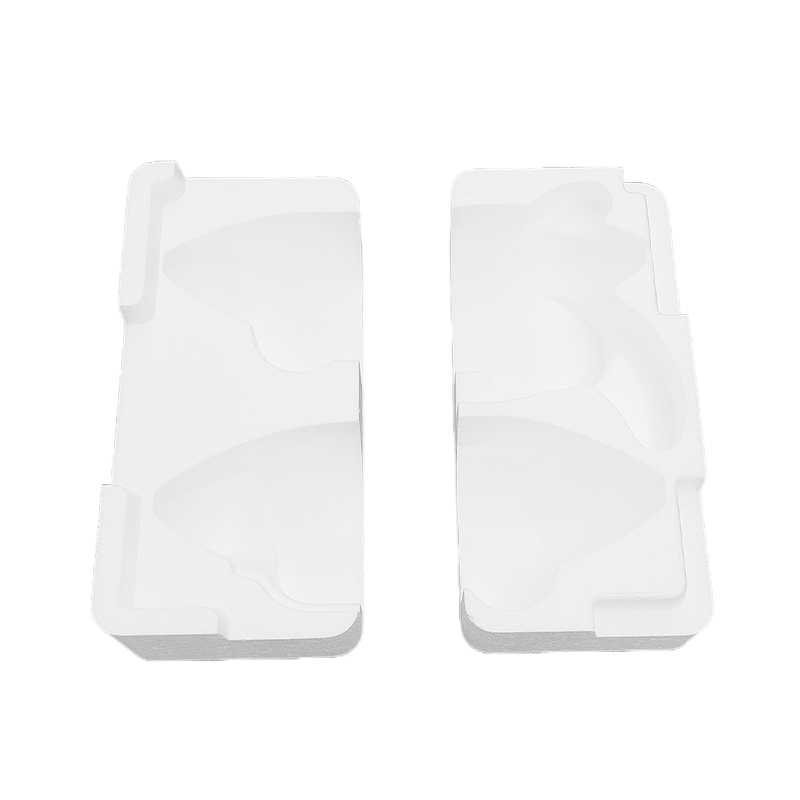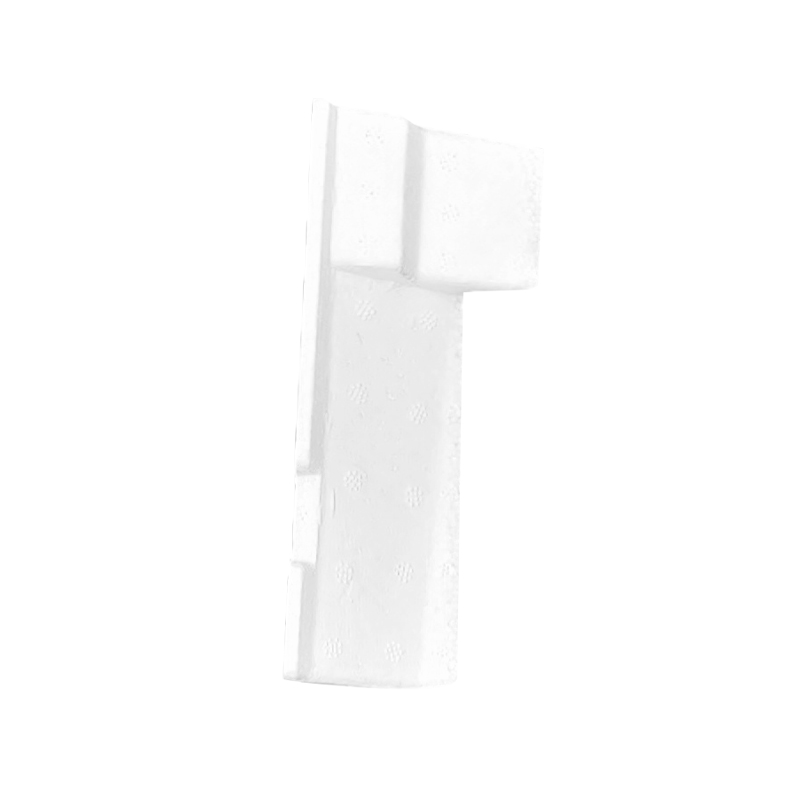Can motor EPS packaging truly protect precision components from damage during transportation?
Release Time : 2025-11-07
In the field of high-end manufacturing and automation equipment, motors, as core power units, have highly precise internal structures—bearing gaps are at the micrometer level, winding enameled wires are delicate and fragile, and stator and rotor assembly is extremely tight. If subjected to improper impact or continuous vibration during transportation or handling, it can lead to performance drift at best, and irreversible mechanical damage at worst, directly affecting the overall lifespan and operational safety of the machine. Therefore, the effectiveness of motor EPS packaging in protecting precision components from transportation damage is not only related to logistics costs, but also touches upon the fundamental logic of product reliability and brand reputation.
Professional-grade motor EPS packaging is not a generic foam filler, but a customized protective system developed based on the concept of "tailor-made." Its primary feature is precise fit. Through 3D scanning or CAD data modeling, the inner cavity of the packaging is precisely sculpted with grooves that perfectly match the shape of the motor, including details such as end cap protrusions, junction boxes, heat dissipation fins, and even mounting flanges, all meticulously replicated. This "zero-gap" packaging ensures the motor has no room to move within the enclosure, fundamentally eliminating friction, impacts, or stress concentration caused by shaking. Especially for motors with painted or plated surfaces, the tight fit also prevents scratches during transport, maintaining the integrity of the appearance.
More importantly, it offers excellent cushioning and shock absorption. EPS material itself has a closed-cell honeycomb structure, absorbing energy through elastic deformation of the cell walls under pressure and quickly returning to its original shape after unloading. For motors of different weights and value levels, engineers scientifically design the foam density, thickness, and support point layout—high-value servo motors may use high-density EPS with localized reinforcing ribs, while small and medium-sized asynchronous motors use medium-density materials to balance cost and protection. This tiered strategy ensures that impact energy is significantly attenuated before reaching the motor body, especially protecting the most vulnerable "sensitive areas" such as bearing raceways and winding ends.
It is worth noting that the design of professional motor EPS packaging also fully considers the dynamic load spectrum. Vibration frequency, drop height, and stacking pressure during transportation are all incorporated into simulation analysis. Through ISTA or ASTM standard testing and verification, packaging solutions must ensure that the peak internal acceleration is controlled below the motor's tolerable threshold under simulated real-world logistics conditions. Some high-end solutions even integrate acceleration recording tags, enabling traceability of impact data throughout transportation and providing objective evidence for quality disputes.
Furthermore, environmental protection and efficiency are also considered. Modern motor EPS packaging generally uses recyclable raw materials, and some companies have introduced starch-based bio-foaming materials as an alternative; modular design facilitates disassembly and reuse, reducing customer operating costs. Automated CNC molding processes ensure consistent packaging dimensions for each unit, supporting large-volume, rapid delivery, meeting motor manufacturers' requirements for supply chain responsiveness.
Conversely, inferior general-purpose foam or simple paper partitions, while inexpensive, cannot provide directional cushioning and restraint functions. The motor "sways freely" inside the box, like an unbelted passenger, facing risks with every bump. This "saving a little money but causing big problems" approach often leads to increased after-sales repair rates, loss of customer trust, and ultimately, more harm than good.
In conclusion, professional motor EPS packaging is far more than a simple "foam shell"; it's an intelligent protective carrier that integrates materials science, structural mechanics, and logistics engineering. With millimeter-level fit precision and a scientific energy absorption mechanism, it silently protects the motor's "heart" during unseen transportation. When a motor arrives safely in the customer's hands and is successfully put into operation, that seemingly plain white foam is actually the most solid line of defense for modern manufacturing's commitment to quality—because true precision lies not only in the product itself but also in how gently it is treated by the world.
Professional-grade motor EPS packaging is not a generic foam filler, but a customized protective system developed based on the concept of "tailor-made." Its primary feature is precise fit. Through 3D scanning or CAD data modeling, the inner cavity of the packaging is precisely sculpted with grooves that perfectly match the shape of the motor, including details such as end cap protrusions, junction boxes, heat dissipation fins, and even mounting flanges, all meticulously replicated. This "zero-gap" packaging ensures the motor has no room to move within the enclosure, fundamentally eliminating friction, impacts, or stress concentration caused by shaking. Especially for motors with painted or plated surfaces, the tight fit also prevents scratches during transport, maintaining the integrity of the appearance.
More importantly, it offers excellent cushioning and shock absorption. EPS material itself has a closed-cell honeycomb structure, absorbing energy through elastic deformation of the cell walls under pressure and quickly returning to its original shape after unloading. For motors of different weights and value levels, engineers scientifically design the foam density, thickness, and support point layout—high-value servo motors may use high-density EPS with localized reinforcing ribs, while small and medium-sized asynchronous motors use medium-density materials to balance cost and protection. This tiered strategy ensures that impact energy is significantly attenuated before reaching the motor body, especially protecting the most vulnerable "sensitive areas" such as bearing raceways and winding ends.
It is worth noting that the design of professional motor EPS packaging also fully considers the dynamic load spectrum. Vibration frequency, drop height, and stacking pressure during transportation are all incorporated into simulation analysis. Through ISTA or ASTM standard testing and verification, packaging solutions must ensure that the peak internal acceleration is controlled below the motor's tolerable threshold under simulated real-world logistics conditions. Some high-end solutions even integrate acceleration recording tags, enabling traceability of impact data throughout transportation and providing objective evidence for quality disputes.
Furthermore, environmental protection and efficiency are also considered. Modern motor EPS packaging generally uses recyclable raw materials, and some companies have introduced starch-based bio-foaming materials as an alternative; modular design facilitates disassembly and reuse, reducing customer operating costs. Automated CNC molding processes ensure consistent packaging dimensions for each unit, supporting large-volume, rapid delivery, meeting motor manufacturers' requirements for supply chain responsiveness.
Conversely, inferior general-purpose foam or simple paper partitions, while inexpensive, cannot provide directional cushioning and restraint functions. The motor "sways freely" inside the box, like an unbelted passenger, facing risks with every bump. This "saving a little money but causing big problems" approach often leads to increased after-sales repair rates, loss of customer trust, and ultimately, more harm than good.
In conclusion, professional motor EPS packaging is far more than a simple "foam shell"; it's an intelligent protective carrier that integrates materials science, structural mechanics, and logistics engineering. With millimeter-level fit precision and a scientific energy absorption mechanism, it silently protects the motor's "heart" during unseen transportation. When a motor arrives safely in the customer's hands and is successfully put into operation, that seemingly plain white foam is actually the most solid line of defense for modern manufacturing's commitment to quality—because true precision lies not only in the product itself but also in how gently it is treated by the world.







